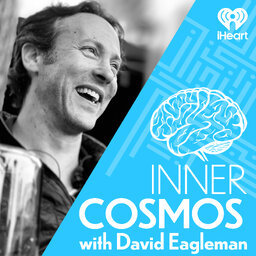Ep51 rebroadcast "Why do brains dream?"
Why do brains dream, and why are dreams so bizarre? Why doesn't your clock work in your dreams? And even though you spend much of your working day looking at your cell phone and computer – why do they almost never make appearances in your dream content? Is dream content the same across cultures and across time? Are dreams experienced in black & white, or in color? Are dreams the strange love child of brain plasticity and the rotation of the planet? What is the relationship between schizophrenia and dreaming? In the future, will we be able to read out the content of somebody's dream? Join Eagleman this week to learn why and how we spend a fraction of our sleep time locked in different realities, swimming in plots which aren't real but which compel us entirely nonetheless.
 Inner Cosmos with David Eagleman
Inner Cosmos with David Eagleman


